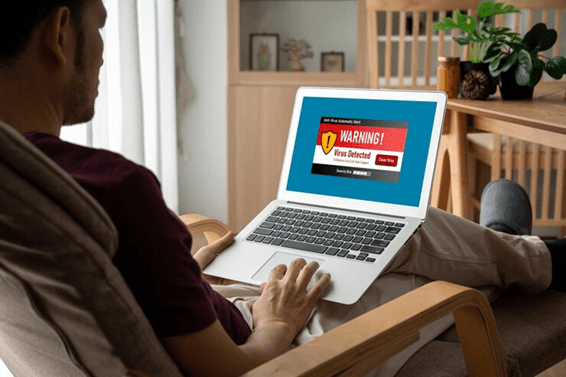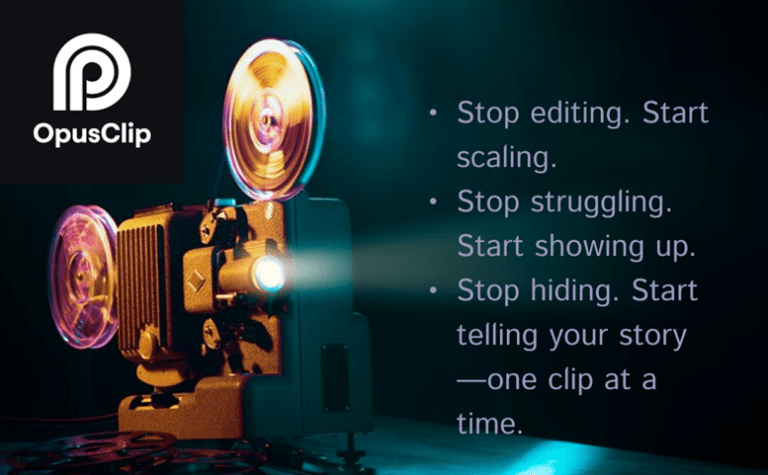You gave your best, added value, educated the audience… and still got slapped with a copyright strike. But what if there’s a smarter way to fight back—not just to survive, but to create and thrive?
You spent hours—maybe days—working on a video that mattered. It wasn’t just a repost.
You saw a misleading viral video online, and something in your gut screamed, This needs context.
So you dug deeper. You added facts. You brought in research, overlays, narration.
Your goal? Not clout. Not clicks.
Clarity.
You were building understanding—educating, debunking, reframing.
Then, finally, you hit “export.”
Your work was ready for the world.
But just as your video hit YouTube, a cold, clinical email appeared like a slap in the face:
“Your video has been removed due to a copyright claim…”
Wait. What?!
You didn’t steal, you transformed, and you added value.
So why did your work get struck down like you did something wrong?
You feel the sting of wasted effort, the frustration of a system that seems to stifle creativity and critical thinking.
When Fair Use Feels Unfair
This isn’t just a technical glitch; it’s an attack on your dedication, a barrier to the free flow of information, and a disheartening blow to anyone striving to educate and inform in the digital age. At TechVoltMedia Solutions, we understand this frustration deeply.
We’ve spent decades navigating the complex landscape of digital media, and we believe your voice, your informed perspective, deserves to be heard. That’s why we’ve assembled our collective expertise – from seasoned media strategists and digital transformation gurus to coding wizards and content virtuosos – to arm you with the knowledge and strategies to navigate this treacherous terrain and reclaim your right to remix and educate.
It’s not just frustrating—it’s disheartening.
As creators, we don’t just upload pixels. We share perspective. And when the algorithm reduces your creative work to a technical flag, it can feel like your effort never mattered.
Your voice—muted.
Your mission—ignored.
The system—rigged?
But here’s the truth:
The system isn’t built to understand intent.
It’s built to detect content. And that’s where most creators get trapped.
The Copyright Minefield: Understanding the Obstacles
Before we delve into solutions, let’s understand why those copyright strikes happen. YouTube’s Content ID system is a sophisticated, automated tool that scans uploaded videos against a vast database of copyrighted material. When a match is found, the copyright holder can choose various actions, including blocking the video, muting the audio, running ads on it, or, as you experienced, issuing a copyright strike.
The core issue lies in the fact that simply adding educational commentary or context doesn’t automatically grant you the right to use copyrighted material. While “fair use” or “fair dealing” exceptions exist in copyright law, their interpretation can be subjective and vary significantly across jurisdictions. YouTube’s algorithms often err on the side of protecting copyright holders, leaving creators who are genuinely adding value in a precarious position.
The Blueprint to Beat the Copyright Trap (Legally, Ethically, Creatively)
Decoding the DNA: Altering the Video’s “Copyright Signature”
Think of a copyrighted video as having a unique digital signature. YouTube’s Content ID system looks for matches to this signature. Your goal is to subtly alter this signature without losing the essence of the original content, while also adding significant transformative value. Here’s a deep dive into potential strategies:
1. Visual Transformations: The Art of Disguise
- The Cartoon/Animation Filter: Applying a distinct cartoon or animation filter can fundamentally change the visual characteristics that Content ID algorithms rely on. This can be achieved through video editing software. The key is to choose a style that is significantly different from the original.
- Example: Imagine a news clip being transformed into a rotoscoped animation with a unique artistic style.
- Stylized Rendering: Applying filters that mimic artistic styles like Impressionism, watercolor, or even pixel art can alter the video’s visual fingerprint.
- Example: A historical documentary clip rendered with a painterly effect.
- Partial Obscuration/Creative Masking: Strategically blurring or masking portions of the original video while focusing on key elements you are analyzing can disrupt the matching process. Use creative shapes or animations for the masks to further differentiate your version.
- Example: Blurring faces or logos while highlighting specific actions or objects you are discussing.
- Adding Unique Visual Overlays: Incorporating substantial and original visual elements like motion graphics, animated text explanations, diagrams, or even augmented reality elements can significantly alter the video’s visual identity.
- Example: Overlaying a scientific video with detailed animated explanations of the processes being shown.
- Color Manipulation and Grading: Drastically altering the color palette, applying strong color grading, or even converting the video to black and white with selective color pops can change its visual signature.
- Example: Turning a brightly colored advertisement into a stark black and white analysis with key elements highlighted in red.
2. Audio Alchemy: Reshaping the Soundscape
- Extensive Voiceover and Commentary: Replace or significantly overlay the original audio with your own detailed commentary, analysis, and additional information. Ensure your voiceover is prominent and continuous.
- Example: Providing a running critique and factual corrections over a clip containing misinformation.
- Adding Original Music and Sound Effects: Layer in substantial amounts of original, royalty-free music and sound effects that are integral to your added context and educational value. This can drown out or significantly alter the original audio fingerprint.
- Example: Adding dramatic or suspenseful music to a news clip you are deconstructing for its narrative techniques.
- Audio Pitch and Tempo Manipulation: Subtly altering the pitch and tempo of the original audio (if you choose to retain snippets) can sometimes be enough to avoid a direct match. However, be cautious not to distort the audio too much.
- Sound Design and Foley: If the original video lacks intricate sound design, adding your own layers of relevant sound effects (foley) can change its audio characteristics.
3. Temporal Transformations: Playing with Time
- Significant Editing and Rearrangement: Don’t just use the video as is. Break it down, reorder segments, and intersperse them with your own original content, graphics, and explanations. The more you restructure the original timeline, the less likely it is to be flagged as a direct copy.
- Example: Taking short clips from a longer interview and weaving them into a thematic analysis with your own introductions and conclusions for each point.
- Speed Ramping and Time-Lapse Effects: Applying significant speed changes to portions of the video can alter its temporal signature. Use these effects creatively to emphasize certain points or condense lengthy sequences.
- Adding Buffer Segments: Insert substantial original content (intros, outros, explanatory segments, animations) before, after, and even within the original video. This dilutes the presence of the copyrighted material within your overall video.
4. The Power of “Fair Use” and Transformative Use: Know Your Rights (and How to Argue Them)
While technical alterations can help bypass Content ID, understanding the principles of fair use (in the US) or fair dealing (in other jurisdictions) is crucial. These doctrines allow limited use of copyrighted material without permission for purposes such as criticism, commentary, news reporting, teaching, scholarship, or research.
The key concept here is transformative use. Your work should add new meaning, expression, or insight to the original material. Simply re-uploading with minimal changes is unlikely to qualify.
To strengthen your fair use argument:
- Clearly State Your Educational Purpose: Make it explicit in your video and description why you are using the original material and how your work adds value.
- Focus on Commentary and Criticism: Your primary focus should be your analysis, critique, or contextualization, with the original video serving as evidence or an example.
- Use Only What is Necessary: Don’t use more of the original material than is required to make your point. Keep the incorporated segments brief and relevant.
- Transform the Original: As discussed above, significantly alter the visual and audio elements to create a distinct and original work.
- Attribute Appropriately: While not a strict requirement of fair use, giving credit to the original source can demonstrate good faith.
Navigating the YouTube Landscape: Best Practices
- Start Small and Test: Upload your edited video as “Unlisted” first. This allows you to see if Content ID flags it without making it public. If it does, analyze the claim and further refine your edits.
- Dispute Claims with Strong Justification: If you receive a copyright claim and believe your use falls under fair use or is sufficiently transformative, file a dispute with a clear and concise explanation of your reasoning. Highlight the educational value and the transformative nature of your work.
- Understand YouTube’s Policies: Familiarize yourself with YouTube’s copyright policies and guidelines.
- Seek Legal Counsel if Necessary: For complex cases or if you repeatedly face copyright issues, consider consulting with a legal professional specializing in copyright law.
- Explore Alternative Platforms: While YouTube is the dominant platform, consider other video hosting services that may have different copyright policies or less aggressive automated enforcement.
At TechVoltMedia Solutions, we understand this pain.
And more importantly, we’ve spent decades helping creators turn that pain into power.
Here’s the game-changing truth:
You can add context, remix, educate—and still avoid copyright strikes.
You just need the right strategy. Let’s summarize it:
Part 1: Understand Why You Got Struck
Before you beat the system, you need to understand it.
The Culprits Behind Most Copyright Strikes:
- Audio Fingerprinting – Even 3 seconds of copyrighted music can trigger detection.
- Video Fingerprinting – Matching visuals (even muted) can cause blocks.
- Content ID Claims – Automated system flags videos that match a rightsholder’s content.
- Manual Claims – Individuals or companies reporting your video directly.
Context doesn’t matter to the algorithm. Only transformation and originality do.
Part 2: The Transformation Framework — Legally Safe, Creatively Bold
Let’s break it down: if you’re using content for education, commentary, criticism, parody, or research, you’re standing in the territory of Fair Use—but you still need to prove transformation.
✅ What You MUST Do:
- Use Only the Necessary Clips
- Use short segments (under 30 seconds ideally) for illustration.
- Cut, crop, zoom, overlay, or blur unnecessary parts.
- Add Original Commentary or Voiceover
- Explain what’s happening.
- Refute, expand, or contextualize the visuals.
- Include On-Screen Text and Overlays
- Use lower-thirds, bullet points, or side-by-side frames.
- Visually emphasize that you’re adding insight.
- Edit Visually and Tonally
- Change the pacing, filter, color grading, or layout of the clip.
- Use CapCut, DaVinci Resolve, or Adobe Premiere to rebuild the scene.
- Use Copyright-Free Music & SFX
- Even if the video is transformed, background music can trigger a strike.
- Sites like Epidemic Sound, Artlist, and YouTube’s own Audio Library are gold.
- Cite Your Sources Transparently
- Use lower-third citations.
- Mention original source clearly in voiceover or description.
Part 3: Tools, Techniques & Creator-Proven Tactics
Here’s how professionals avoid strikes while making powerful videos:
Tools:
- CapCut & Premiere Pro – For dynamic text overlays, cropping, and color tone changes.
- Audacity – For audio cleanup and adding original sound narration.
- Pexels & Pixabay – To add b-roll or replacement footage.
- Descript – For automatic transcription and adding captions that aid in commentary.
Tactical Edits That Work:
- Picture-in-picture (PiP) with your commentary.
- Cinematic framing with blurred backgrounds.
- Reaction format — where you break the video into parts and insert your commentary after each.
- Split-screen comparison showing the original alongside counterpoints.
Extra Layer: Licensing Options for Added Safety
If you’re consistently using third-party footage:
- Consider licensing platforms like Storyblocks, Envato Elements, or AP Archive.
- Use Creative Commons–licensed videos with attribution.
- Or reach out directly to the creator for permission.
Your Voice Deserves to Be Heard
Copyright isn’t your enemy—ignorance of the system is.
You’re not just a content creator.
You’re a storyteller.
An educator.
A builder of better narratives in a noisy world.
Your voice matters—and with the right tools and understanding, it can break through any algorithmic wall.
The next time you find a video that needs context, don’t hold back.
Transform it. Elevate it.
Just do it strategically.



